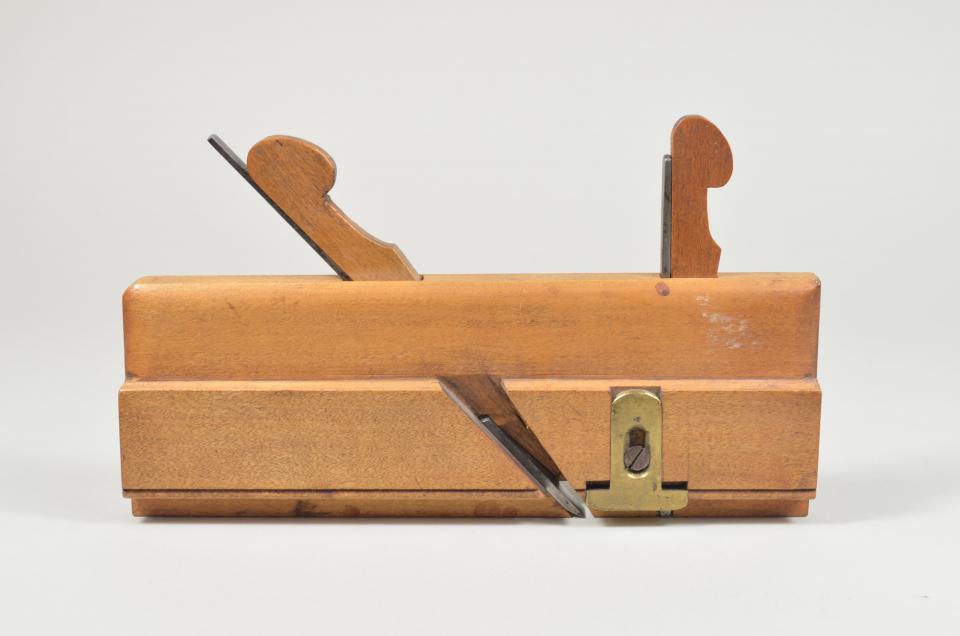
L: 23.5cm W: 2.6cm H: 13.0cm
a- L: 23.5cm W: 2.6cm H: 8.0cm
b- L: 12.0cm W: 2.0cm H: 0.7cm
c- L: 12.5cm W: 1.0cm H: 0.4cm
d- L: 15.5cm W: 2.3cm H: 1.0cm
e- L: 18.2cm W: 1.0cm H: 0.3cm
Wooden dado plane consisting of 5 parts.
a- The body of the plane is rectangular and is made of a light brown hardwood. A cheek protrudes from the bottom half of the front and back sides. The sole extends out 1.0cm below the cheek and is narrower in width than the body. The top edges of the body are rounded. A throat is cut near the middle of the piece and slopes down towards the toe. A second slot is cut near the toe and is perpendicular to the length of the body. This slot is encased by a brass plate that is securely screwed into the wood body. Stamps on toe read: "H. SHARP / DUBLIN"; "I BLOWER". Stamps on heel read: "I BLOWER"; "3/8".
b- The wedge accompanies the double spur iron (c). It tapers to a blunted point on one end and is rounded in an elliptical shape on the other.
c- The double spur iron is short but narrow. The cutting edge consists of a square with two blades protruding 2mm from opposing ends. The width of the cut is 3/8".
d- The wedge accompanies the cutting iron (e). It is made of the same hardwood as the body (a). It tapers to a point on one end and is rounded in an elliptical shape on the other. A small cutout allows for easy handling.
e- The cutting iron is made of a dark grey ferrous metal. The cutting edge is 2mm wider than the rest of the piece. The bottom of the blade is perfectly square. The width of the cut is 3/8" or 1.0cm.
Dado planes are used to cut dado grooves, strict rectangular grooves with straight bottoms and shoulders. A double spur is installed in front of the cutting iron, and cuts two trenches on either side of the blade. This way, the blade can dig out material with minimal tear-out and exceptionally clean lines. This plane was traditionally used for preliminary work in wood floors or to cut grooves for bookcase shelves. When working across the grain, the artist must first make a reverse stroke to ensure the double spur cuts through the surface of the wood.
